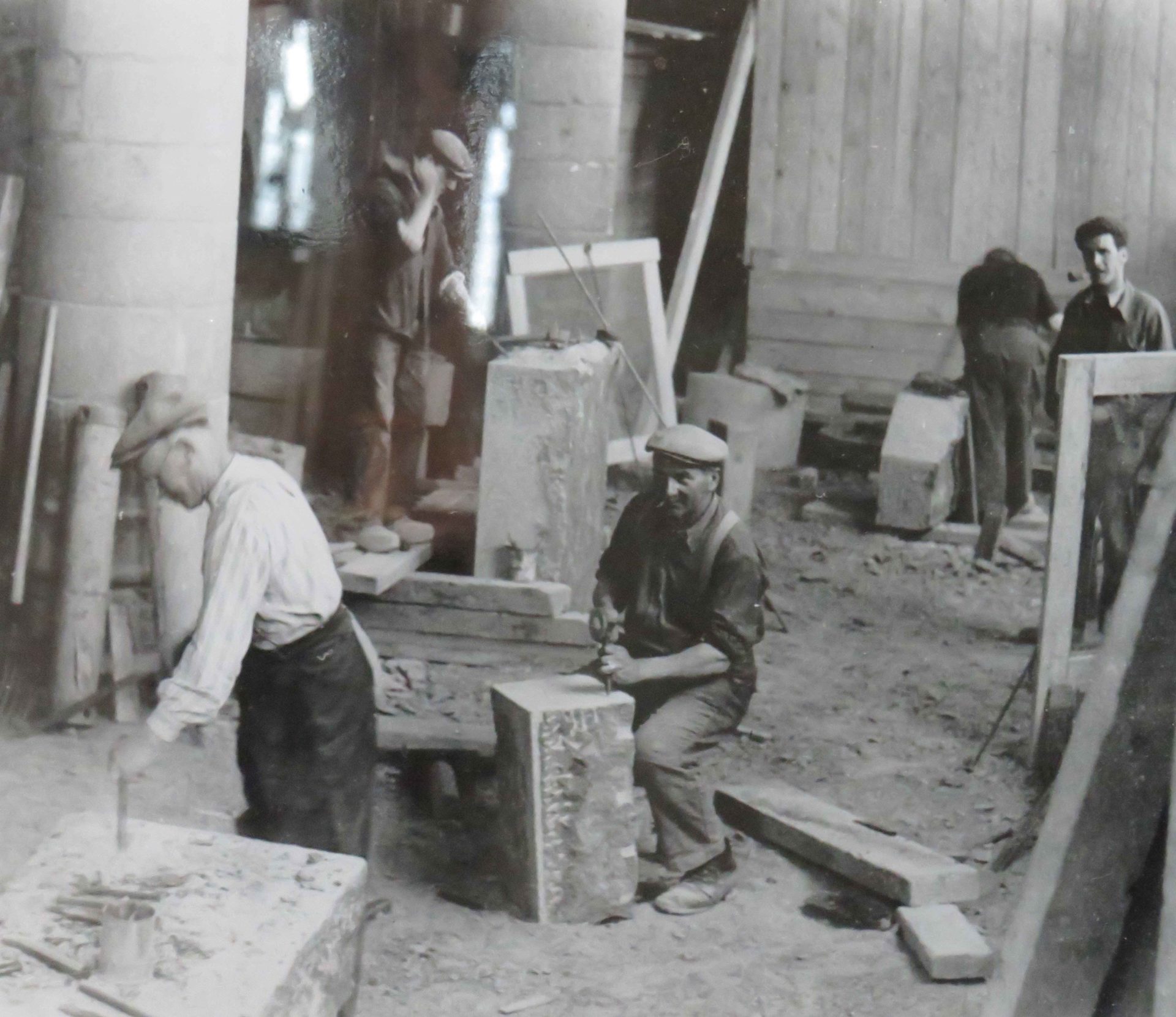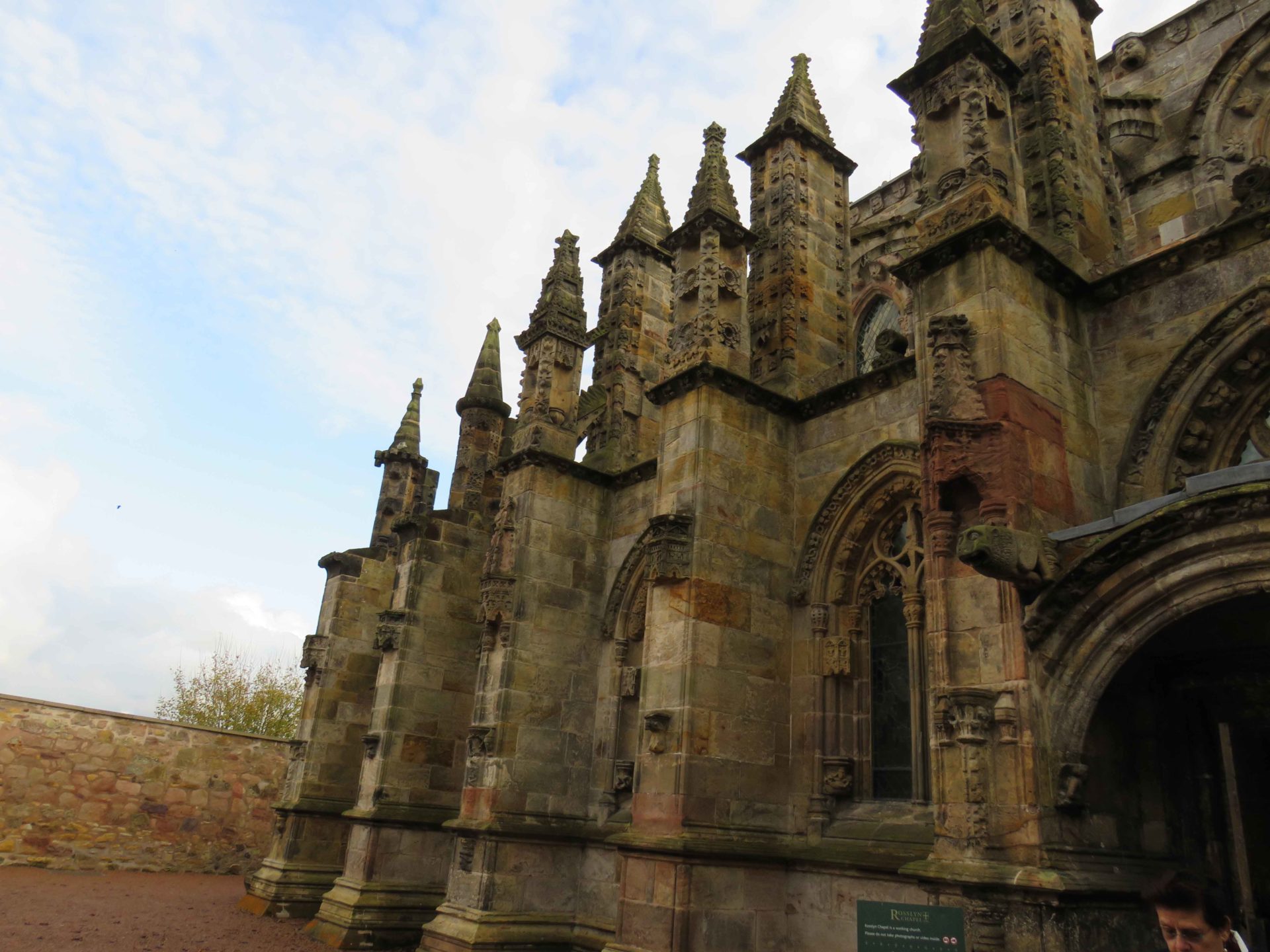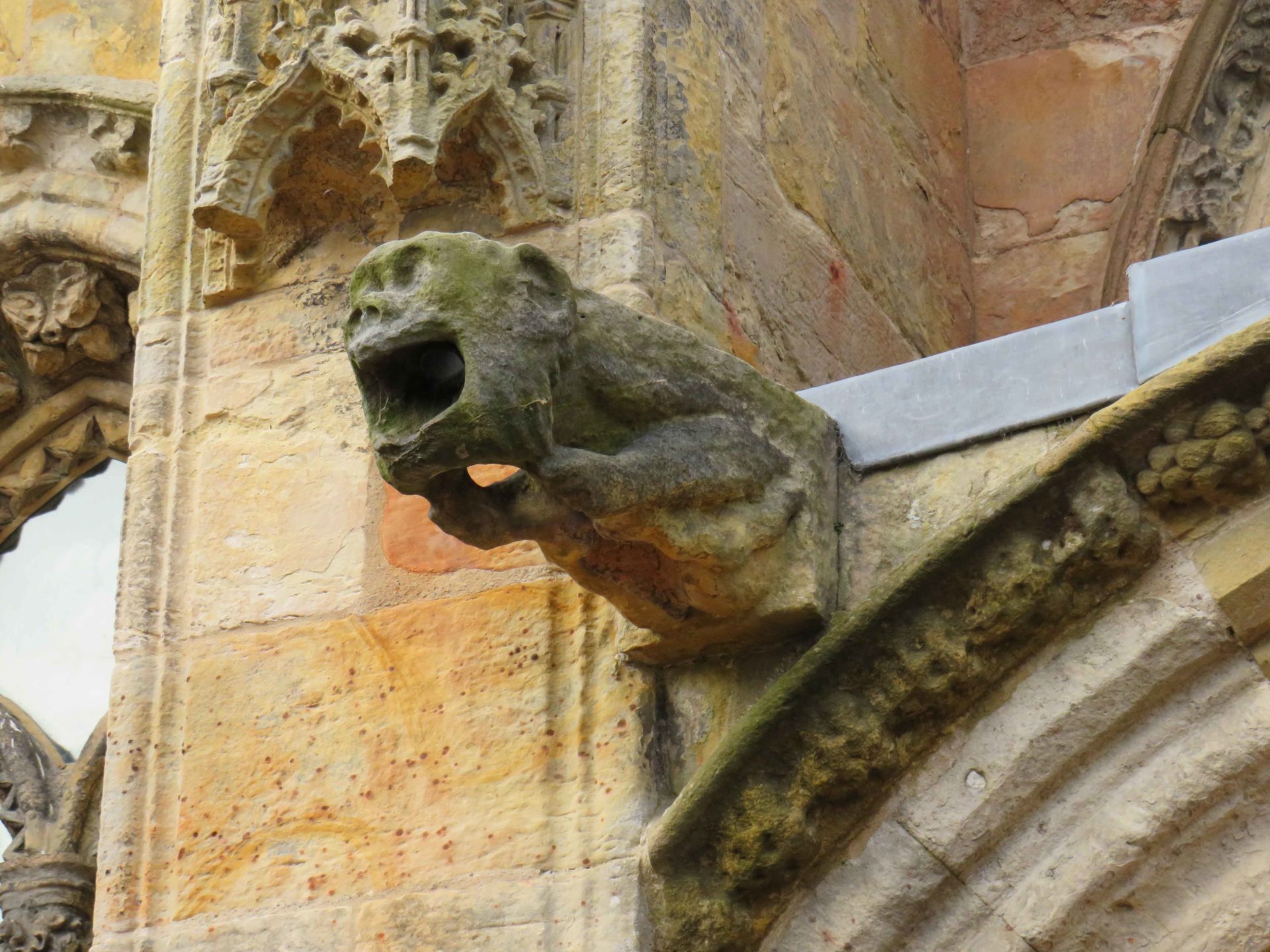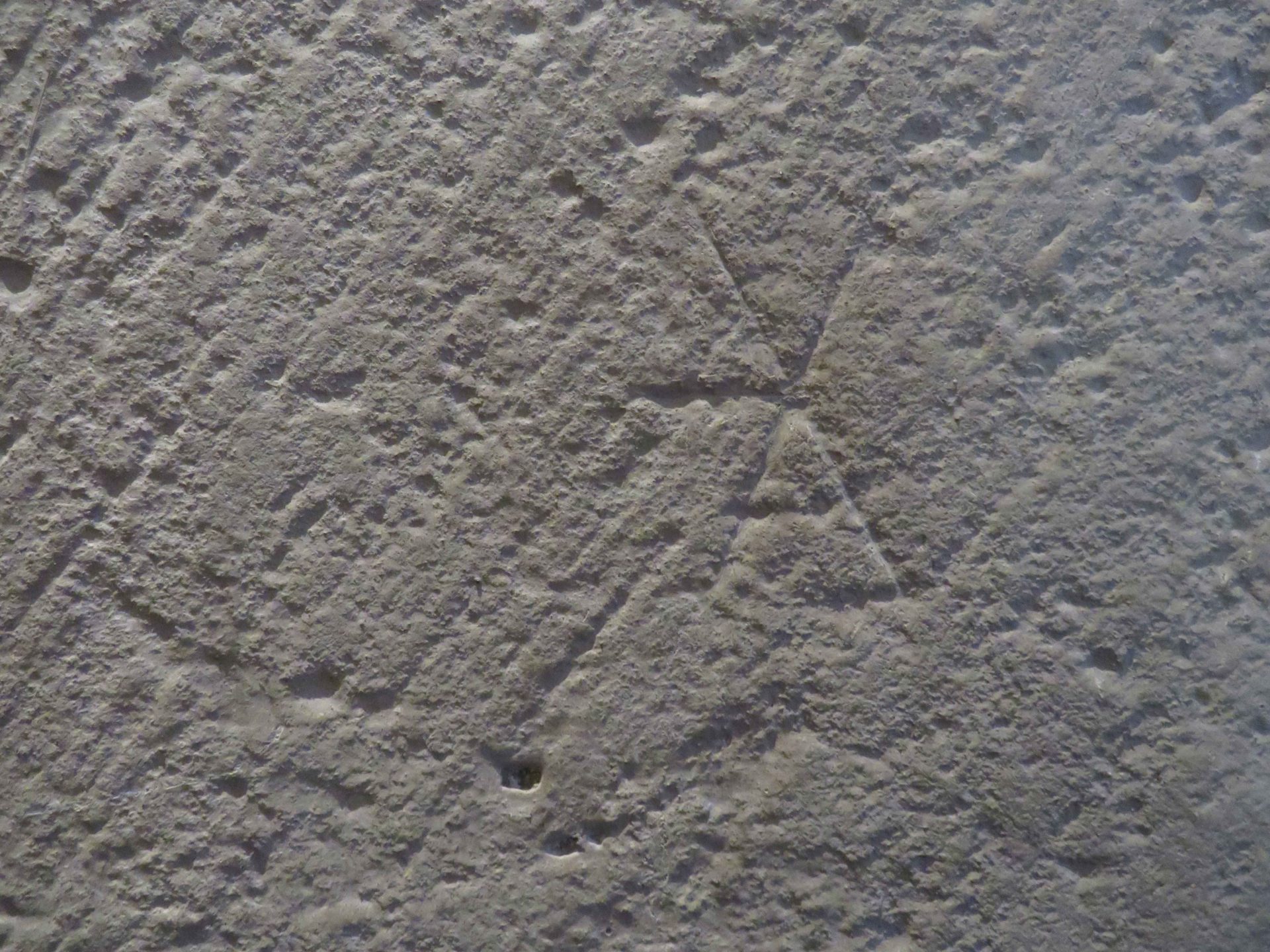Stonemasons
Freemasonry traditionally has been clouded in mystery. Some published manuscripts propagate common myths and misconceptions, while others strive to be more discerning. The ritual and secrecy associated with this patriarchal fraternity has helped to fuel the speculation and spawn best sellers like Dan Brown’s Da Vinci Code and The Lost Symbol.
Men in the first lodges were operative masons who used the plumb, the level, the square and the compass (symbols still used in Freemasonry) as tools of their trade. They were conversant with building methods, and mathematical expertise that had to be undertaken to lay foundation stones and build large cathedrals and churches. They moved freely across Europe, often needing somewhere to stay. These places were called 'loges' leading to the English term 'lodges'. Some of the only workers to be able legally to move out of their parishes for work, these men were often called 'free' masons.
In the seventeenth century and possibly much earlier, Operative Lodges 'accepted' into their memberships men who were not operative masons. These men were given the name 'Speculative Masons' so as to distinguish them from the 'Operative Masons'. We know them today as 'Freemasons'.



Above: Stonemasons repairing Notre Dame de Vire in June 1949. A small article about this beautiful cathedral.
https://ballaratheritage.com.au/article/notre-dame-de-vire/
There is a museum to stonemason's nearby the city of Vire, at St Michel Mon joie. It is the Park Granite Museum.
https://www.france-voyage.com/cities-towns/saint-michel-de-montjoie-17800.htm
Names of Stonemasons on the goldfields of Victoria:
Robert Archer (Sebastopol); Julien Hardy (Warrenheip)
Below: At the launch of Freemasons on the Goldfields: Ballarat & District 1853-2013. I talk about why I was interested in writing about the fraternity of Freemasons, and how they shaped the goldfields. While I was researching the Ballarat Female Refuge I began to question how the charities in Ballarat were set up so qucikly. The 'Refuge' was established as early as 1867 by a group of 26 of Ballarat's married women. Two years before this a group of publicans established Ballarat's orphanage. Why not a group of doctors? or councillors? or tradesmen? What did all these men have in common?
Origins of Freemasonry
For those readers not familiar with Freemasonry some explanation of its origins, earlier traditions and some of the misconceptions surrounding the fraternity. Allegories and symbolism are heavily relied upon within the Masonic fraternity, so much so, that a discussion of some of the most notable of these signs is as necessary and intrinsic to the history of the lodges as the men who established them.
There is conjecture as to how and when Freemasonry started. It is clear that more than one school of thought prevails: some believe that Freemasonry began at the time of the Crusades with the mystical and romantic Knight Templars; others believe that Freemasonry evolved from the ancient stonemasons’ Guilds, and still others think that its roots go as far back as the building of the great temple in Jerusalem around the time of King Solomon. Some even see it as linking with other similar initiatory orders and as a modern form of the Ancient Mysteries.
One of the earliest documents of the guild of Masons in England is attributed to King Athelston in York, England in 926 AD. The term Freemason is thought to derive from the fact that masons who were members of a Guild and so could move around the country and cities freely looking for work (usually on gothic cathedrals or castles), as opposed to villiens who remained in or around a locality according to feudal traditions, where people were bonded to the land.
Like other historical dates, times and places, there is some confusion and ambiguity about exact dates of establishment especially in earlier times when records were not so accurately maintained. There appears to be some common linkages within the organisations known as Knights Templars, the Temple of Solomon and the stonemasons’ Guilds. There is also an overlap between the official starting date of the fraternity of Free and Accepted Masons and the known existence of former lodges and stonemason’s Guilds. There are different Constitutions between Europe, England, Scotland and Ireland and some obscurity about when lodges were actually established in these places.
There is scarce accepted documentary evidence concerning Freemasonry prior to and during the early eighteenth century. Some documents and items however are being discovered like the Masonic medallion bearing the date 1516, predating the establishment of the Grand Lodge of England. Four documents, one a fragment, provide the basis of the study of the early rituals in England: The Edinburgh Register House MS, dated 1696; The Chetwode Crawley MS, dated c1700; The Kevan MS, dated c1714; and The Haughfoot Fragment, dated 1702. The three complete texts are similar in content endorsed by the fragment and describe the admission procedures and ritual under the Scottish two-degree system between 1696 to around 1714.
It is commonly accepted that Modern Masonry officially emerged when the Grand Lodge of England was formed in 1717 although there are many references to masons earlier than 1717. Three years later the Grand Lodge of Ireland was established in 1720, while in 1735 four Scottish Lodges discussed the formation of a Grand Lodge of Scotland. On 30 November 1736 representatives from 33 lodges met in Edinburgh. William St Clair of Roslin was elected the first Grand Master Mason of the Grand Lodge. Below are some images of Rosslyn Chapel, Scotland where many masons' marks and other stonework features can be found. The famous 'apprentice's column' is inside the chapel. Gargoyles and strange exotic creatures abound guarding the entrances.



Masons Marks
Masons’ Marks were in evidence in many churches and persisted to the 14th century. Hundreds of these marks have been noted on Norman churches and castles. These signs suggest a well-organised body of masons whose marks were probably registered in a lodge by a recorder of Marks. Similar marks can be found in ancient Rome, Greek and Hindoo buildings and in Asia minor, Jerusalem and Egypt. (See The Comacines or Cathedral Builders, Address given by R. W. Bro. Hugh Philp, P.S.G.W., 30°, at Lodge of Research, No. 218, Melbourne, July 1959, The Victorian Craftsman, Vol. XLIII, No.3, October 1959, pp. 65-66.)
Yarrowee Channel, Ballarat
The Yarrowee Channel in Ballarat Victoria Australia contains many different marks in the bluestone work. I first walked along this channel in the 1950s when I was just a kid, and we “dared” each other to go through and under the dark and cobwebby bridges. Later, in 2010, when I was researching the Freemasons on the Goldfields, John Blythman introduced me to these fascinating mason’s marks.
Dr David Waldron, bluestone expert Dr Susan Walter and myself, in conjunction with the St George’s Mark Freemason’s Lodge, researched the channel for clues, and examined some of the marks found in this nineteenth century Ballarat structure, asking questions about their provenance and construction.
The mason’s marks at the Yarrowee are similar to some of those marks on buildings in Britain and Scotland. The ones in England were made some centuries earlier, in a different time and place. This is a preliminary glance at a fascinating conundrum.
Chapter Mystery Marks and Masons on Comparisons of Masons Marks - Ballarat and Britain - by Wickham and Waldron in Pay Dirt: Ballarat and Other Gold Towns
https://ballaratheritage.com.au/bookshop/pay-dirt-ballarat-gold-victoria-eureka/
Carlisle Cathedral, England
Carlisle Cathedral has stood on the same site for over 800 years. Earlier archeological excavations have dated the site back to Roman times and before. Carlisle is a border city with Scotland around 13 miles to the north. Until 1540 a community of Augustinian canons served the cathedral. The monastery ruins are adjacent to the cathedral and it was here that the canons lived highly organised lives. As canons, rather than monks, they were freer to undertake pastoral and educational work.
Inside the Cathedral there is mediaeval graffiti and carvings on the choir pews. The strange curly "T" is the mark of stonemason Thomas Crump.
Durham Cathedral, England
Durham Cathedral is closely connected to the Diocese of Lindesfarne and the monks who lived there. Saint Cuthbert became Bishop of Lindisfarne from 685 until his death in 687. When the monks fled Lindisfarne in 875, they carried Saint Cuthbert's relics with them.
They finally resettled at Chester-le-Street, 60 miles south of Lindisfarne and 6 miles north of Durham. Further Viking raids saw the monks moving again, to a spot, which eventually became the City of Durham. They initially built a temporary structure to house the relics of the revered Saint Cuthbert. This structure was replaced with a more subtantial building which was known as the White Church and was completed in 1018. A town grew around the church housing the remains of Saint Cuthbert, and was the beginnings of the city of Durham.
Bishop William of St. Calais demolished the old Saxon church, and on 11 August 1093 he laid the foundation stone of the Durham Cathedral. Major additions and reconstructions have taken place over the centuries.
Greyfriars Church, Edinburgh
In Greyfriars Church the national covenant was adopted and signed on 28 February 1638. In the Churchyard are objects of historical interest such as the Martyr's Monument towards the north east and the Covenanters' Prison towards the south west. There are also the graves of many Scotmen and citizens of Edinburgh of whom some of the most important are:
James Douglas, Earl of Morton Regent of Scotland, died 1581; George Buchanan, Historian and Reformer died 1532; Alexander Henderson, Churchman and Statesman, died 1646; Sir George McKenzie, King's Advocate died 1691; Mary Erskine, School Founder, died 1707; William Carstairs, Statesman, died 1715; George Watson, School Founder, died 1723; Colin Maclaurin, Mathematician, died 1746; William Adam, Architect, died 1748; Thomas Ruddiman, Grammarian, died 1757; Allan Ramsay, Poet, died 1758; William Robertson DD, Historian, died 1793; James Hutton, Geologist, died 1797; Duncan Ban MacIntyre, Gaelic Poet, died 1812; William Creech, Bookseller, died 1815; John Kay, Caricaturist, died 1826; Henry Mackenzie, 'The Man of Feeling', died 1831; Thomas McCrie, Historian, died 1835; and William McGonagall, Poet, died 1902.